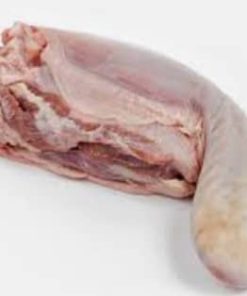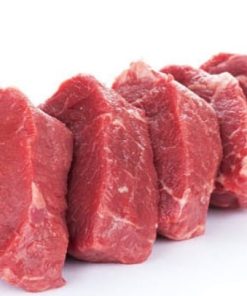Mkia wa Ngo’mbe ( Cow Tail 1pc) (Order before 9am)
Sh7,000 – Sh10,000
Cow Tail (Ox-Tail)
Oxtail is often served as part of a stew or soup, as oil, cartilage and bone marrow add a lot of flavor. The meat becomes more tender when cooked in water for a long time.
-
Main ingredient; Cow tail
-
Seasonings; Salt, Cooking Oil, Curry, Thyme, Ginger powder, Slice Onions, Black pepper
https://cookpad.com/in/recipes/15985383-cow-tail-pepper-soup?ref=search&search_term=cow%20tail
Nutritional Benefits of Cow Tail (Oxtail)
Oxtail is a common name for a cow’s tail. It is used in a variety of recipes, including traditional Jamaican and Chinese recipes. Oxtail is often served as part of a stew or soup, as oil, cartilage and bone marrow add a lot of flavor. The meat becomes more tender when cooked in water for a long time.
1. Calories
A 100-gram oxtail contains 262 calories. Of these calories, 130 are derived from fat. Because oxtail is often served as part of a larger dish and is often cooked, the amount of calories consumed in an oxtail bowl will depend largely on the other ingredients used.
Typical ingredients include onions, garlic, beans and winter vegetables. Livestock or vegetable livestock is also often used to make stews or soups with oxtail.
2. Fat and Cholesterol
There are 14.34 grams of total fat in a 100-gram oxtail feed. In this case, 5.56 grams of saturated fat, and a 2,000-calorie diet should not contain more than 22 grams daily. One oxtail delivery does not contain trans fats. Also, one oxtail feed contains 141 milligrams of cholesterol.
According to a 2,000-calorie diet, you should not consume more than 300 milligrams a day. Because oxtail is often cooked or made into soup, the amount of extra fat will vary.
3. Sodium, Carbohydrates and Proteins
One oxtail delivery also contains 233 milligrams of sodium and no carbohydrates. In 100-gram serving oxtail, there are 30.93 grams of protein.
This amount makes oxtail an excellent source of protein, as this is about two-thirds of the daily protein requirement of a 2,000-calorie diet.
| Size | M, S |
|---|
General Inquiries
There are no inquiries yet.
Related products
RED MEAT
RED MEAT
SPICES/VIUNGO
SPICES/VIUNGO
RED MEAT















